[03-JAN-25] The Implantable Sensor with Lamp (ISL) is obsolete. We have abandoned our attempts to combine sensor, stimulator, and light source into a single device and instead we have separated them into an Implantable Stimulator-Transponder (IST), an Implantable Light-Emitting Diode (ILED), and a Subcutaneous Transmitter (SCT). Separating the sensor and stimulator reduces lamp artifact, increases operating life, and improves animal health. The only disadvantage of separating the sensor and stimulator is that internal closed-loop control is no longer possible: the sensor cannot act as an event detector and activate a stimulus on its own. But closed-loop control is of little value in translational research studies: we always want to record the sensor output for later study, and we always want to know when a stimulus has been issued, so it is no inconvenience for us to detect events in our data acquisition computer and initiate stimuli using the external data acquisition system.
[25-JUL-22] The Implantable Sensor with Lamp (ISL) combines biometric sensor and optogenetic stimulator in one wireless device controlled by its own micro-power processor. By combining the sensor and stimulator, we make it possible to implement immediate response to the sensor signal with the generation of a suitable stimulus. But we also make it much harder to isolate the sensor signal from the stimulation signal, so that our sensor signal tends to be plagued by various forms of what we call lamp artifact. The Implantable Sensor with Lamp (A3037) reduces lamp artifact to a few tens of microvolts by powering the lamp and sensor from two separate batteries, and communicating the stimulus pulses from the sensor circuit to the stimulator circuit using an opto-isolator.

To generate light, we connect the stimulus leads of the ISL to one of our Implantable Light-Emitting Diodes (ILEDs). Our Surface-Mount Light-Emitting Diodes (SMLEDs) come in red, green, and blue. These are designed to be fastened to the surface of an organ and illuminate the tissue within. Our Fiber-Coupled Light-Emitting Diodes (FCLEDs) are designed to be anchored to the skull for illumination of deeper brain tissue.
Implantable Stimulator-Transponder (IST): A device that applies a voltage to its stimulus electrodes after receiving a radio-frequency command, and which also transmits acknowledgements, battery measurements, and synchronization signals. Example ISTs are the new A3041 and the obsolete A3036.
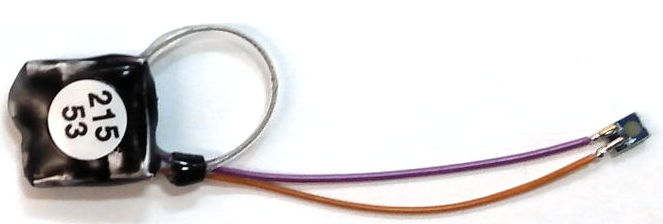
Subcutaneous Transmitter (SCT): A device that amplifiers and filters one or more biometric signals, samples them, and transmits the samples wirelessly to an external data receiver. An example SCT is the A3028B single-channel 0.3-160 Hz transmitter for mice.
Implantable Stimulator-Sensor (ISS): A device that applies a voltage to its stimulus electrodes after receiving a radio-frequency command, transmits acknowledgements, battery measurements, and in addition provides continuous monitoring of a biometric signal with wireless transmission. We no longer manufacture an ISS. Instead, we recommend implanting an IST with an SCT. Example ISSs are the obsolete A3037 and A3030.
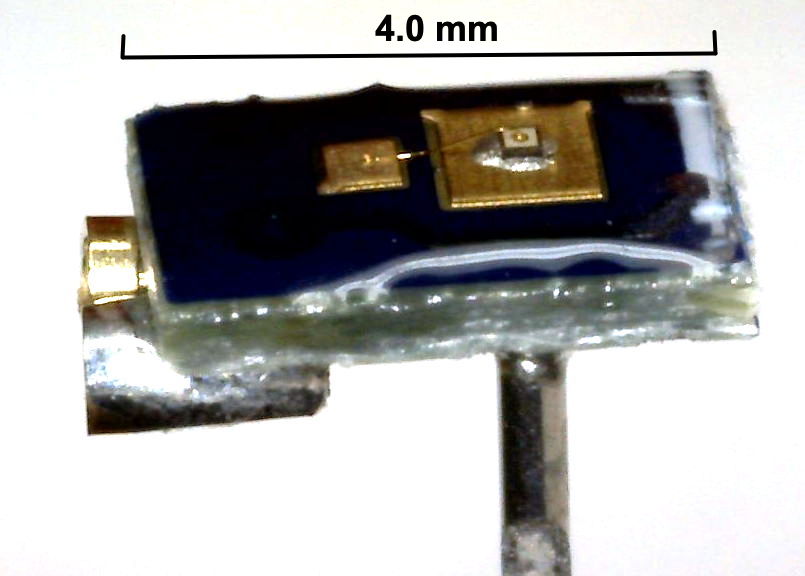
Surface-Mount Light-Emitting Diode (SMLED): A light-emitting diode designed to illuminate the surface of light-sensitive tissue. The LED is equipped with sockets that accept the pins at the end of stimulator leads. And example ILED is the blue A3036IL-A.
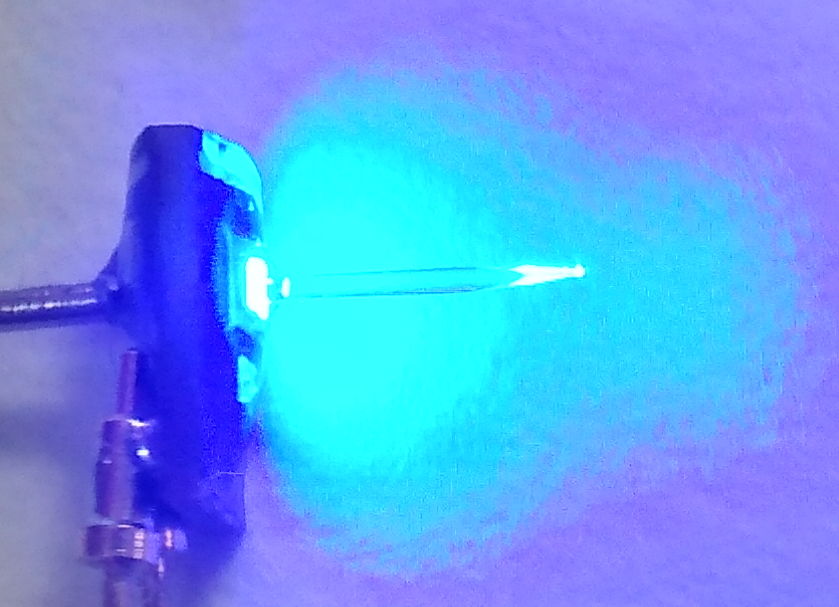
Fiber-Coupled Light-Emitting Diode (FCLED): A light-emitting diode with a fiber-optic light guide glued to its surface, which carries roughly half its light a to a tapered glass tip, where the light is emitted in all directions. The light guide is six to ten millimeters long, and allows us to deliver optical stimulation to tissue several millimeters below the surface. An example FC-LED is the A3036IL-A8. Another example is the A3024HF-B, which provides a guide cannula in addition to the light guide.
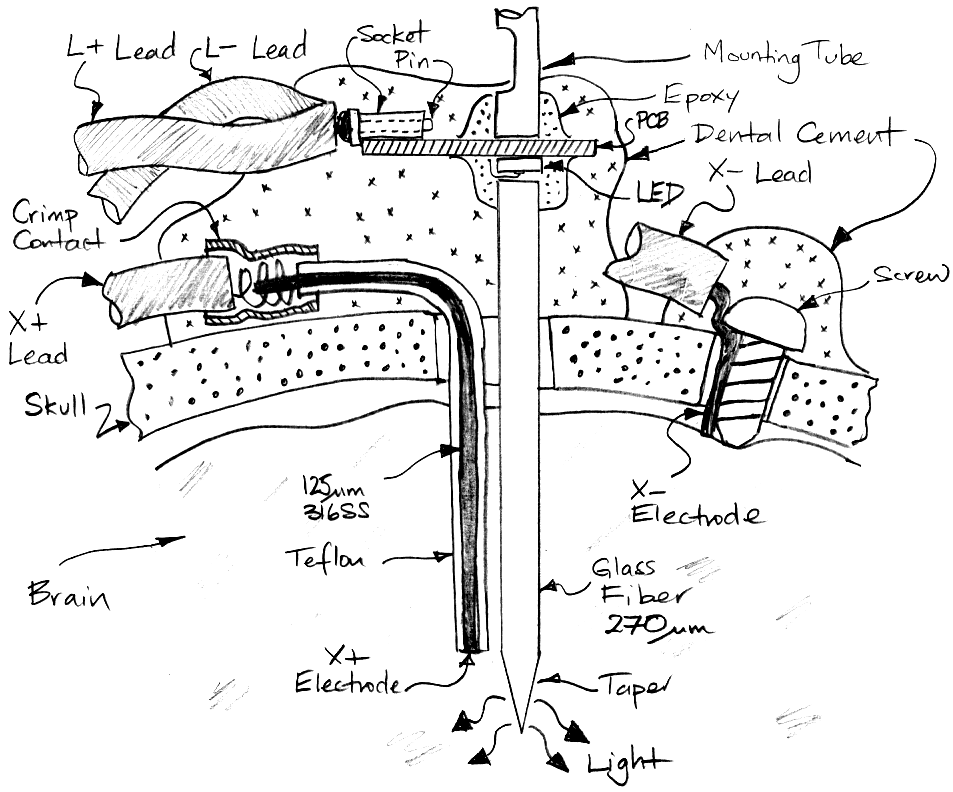
Closed-Loop Control: When we have both a sensor and a stimulator implanted in an animal, we can generate stimuli in response to events in the sensor signal. This real-time response to sensor data with a stimulus is what we call closed-loop control. Watching for seizure onset in EEG, and responding to seizure onset with twenty seconds of electrical pulses applied to the brain, is an example of a closed-loop system.
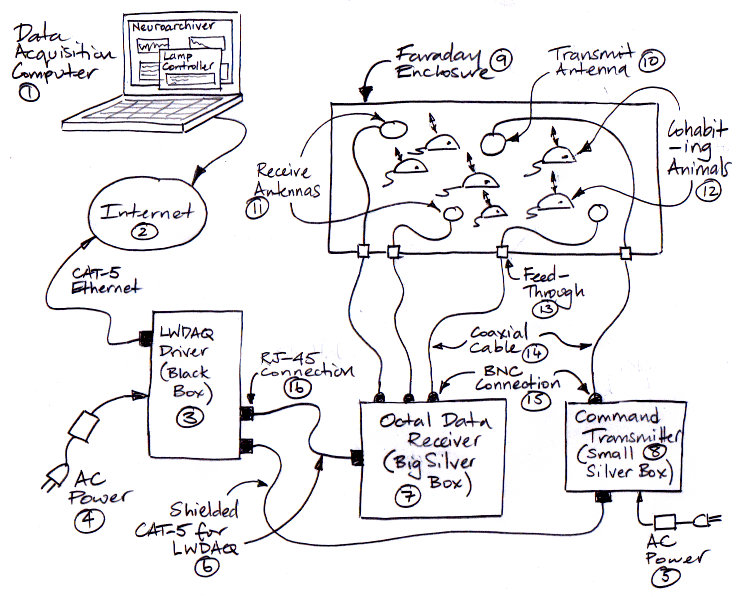
Internal and External Closed-Loop Control: When we analyze the sensor signal and decide the response in a computer outside the animal, we call this external control. When we perform the same analysis and decision-making within the animal, we call it internal control. Separate IST and SCT implants provide reliable and long-lasting external closed-loop control. Only an ISL can provide internal closed-loop control.